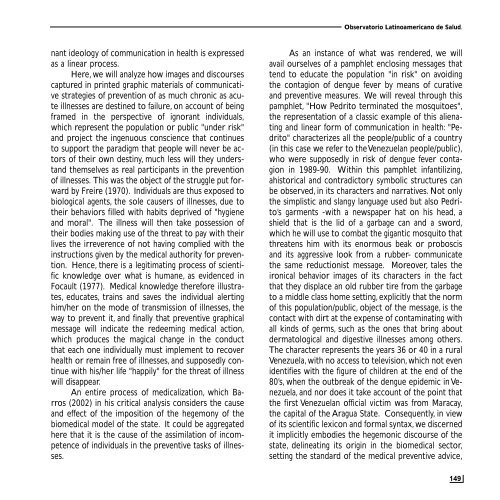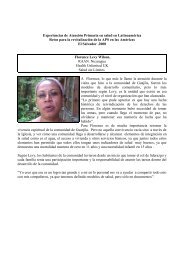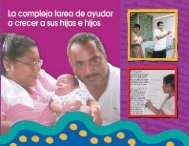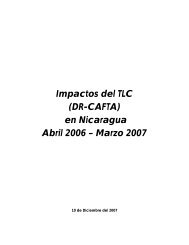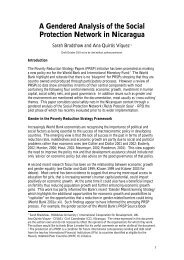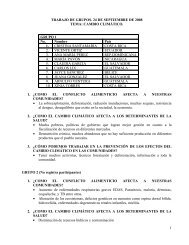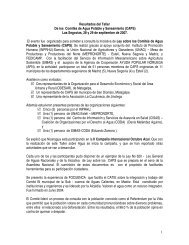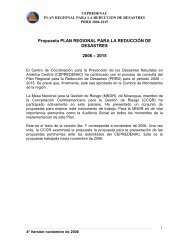Download - CISAS | Centro de Información y Servicios de AsesorÃa ...
Download - CISAS | Centro de Información y Servicios de AsesorÃa ...
Download - CISAS | Centro de Información y Servicios de AsesorÃa ...
Create successful ePaper yourself
Turn your PDF publications into a flip-book with our unique Google optimized e-Paper software.
Observatorio Latinoamericano <strong>de</strong> Salud.nant i<strong>de</strong>ology of communication in health is expressedas a linear process.Here, we will analyze how images and discoursescaptured in printed graphic materials of communicativestrategies of prevention of as much chronic as acuteillnesses are <strong>de</strong>stined to failure, on account of beingframed in the perspective of ignorant individuals,which represent the population or public "un<strong>de</strong>r risk"and project the ingenuous conscience that continuesto support the paradigm that people will never be actorsof their own <strong>de</strong>stiny, much less will they un<strong>de</strong>rstandthemselves as real participants in the preventionof illnesses. This was the object of the struggle put forwardby Freire (1970). Individuals are thus exposed tobiological agents, the sole causers of illnesses, due totheir behaviors filled with habits <strong>de</strong>prived of "hygieneand moral". The illness will then take possession oftheir bodies making use of the threat to pay with theirlives the irreverence of not having complied with theinstructions given by the medical authority for prevention.Hence, there is a legitimating process of scientificknowledge over what is humane, as evi<strong>de</strong>nced inFocault (1977). Medical knowledge therefore illustrates,educates, trains and saves the individual alertinghim/her on the mo<strong>de</strong> of transmission of illnesses, theway to prevent it, and finally that preventive graphicalmessage will indicate the re<strong>de</strong>eming medical action,which produces the magical change in the conductthat each one individually must implement to recoverhealth or remain free of illnesses, and supposedly continuewith his/her life "happily" for the threat of illnesswill disappear.An entire process of medicalization, which Barros(2002) in his critical analysis consi<strong>de</strong>rs the causeand effect of the imposition of the hegemony of thebiomedical mo<strong>de</strong>l of the state. It could be aggregatedhere that it is the cause of the assimilation of incompetenceof individuals in the preventive tasks of illnesses.As an instance of what was ren<strong>de</strong>red, we willavail ourselves of a pamphlet enclosing messages thattend to educate the population "in risk" on avoidingthe contagion of <strong>de</strong>ngue fever by means of curativeand preventive measures. We will reveal through thispamphlet, "How Pedrito terminated the mosquitoes",the representation of a classic example of this alienatingand linear form of communication in health: "Pedrito"characterizes all the people/public of a country(in this case we refer to the Venezuelan people/public),who were supposedly in risk of <strong>de</strong>ngue fever contagionin 1989-90. Within this pamphlet infantilizing,ahistorical and contradictory symbolic structures canbe observed, in its characters and narratives. Not onlythe simplistic and slangy language used but also Pedrito’sgarments -with a newspaper hat on his head, ashield that is the lid of a garbage can and a sword,which he will use to combat the gigantic mosquito thatthreatens him with its enormous beak or proboscisand its aggressive look from a rubber- communicatethe same reductionist message. Moreover, tales theironical behavior images of its characters in the factthat they displace an old rubber tire from the garbageto a middle class home setting, explicitly that the normof this population/public, object of the message, is thecontact with dirt at the expense of contaminating withall kinds of germs, such as the ones that bring about<strong>de</strong>rmatological and digestive illnesses among others.The character represents the years 36 or 40 in a ruralVenezuela, with no access to television, which not eveni<strong>de</strong>ntifies with the figure of children at the end of the80’s, when the outbreak of the <strong>de</strong>ngue epi<strong>de</strong>mic in Venezuela,and nor does it take account of the point thatthe first Venezuelan official victim was from Maracay,the capital of the Aragua State. Consequently, in viewof its scientific lexicon and formal syntax, we discernedit implicitly embodies the hegemonic discourse of thestate, <strong>de</strong>lineating its origin in the biomedical sector,setting the standard of the medical preventive advice,149


